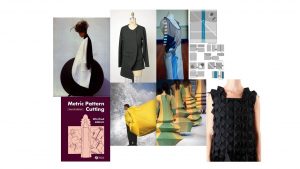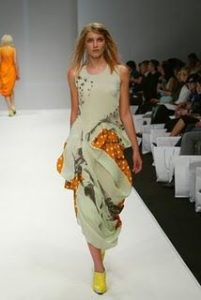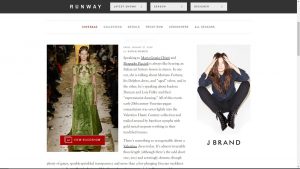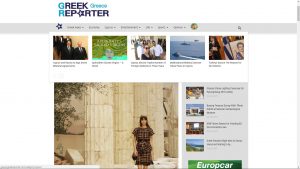
This is a print ad for Duncan Quinn suits which was considered to be the most sexist Advertisement in 2008.
The leading character has been made very clear in this picture: a well-dressed beast teasing or insulting a barely clothed woman. The way he uses his tie to fasten the lady while he is holding one end of the cloth like leading a pet. One netizen describes it as “Duncan Quinn depicted mobsters torturing female bodies”[3] besides, The correlation of the utilisation of black and white classic filter could mean it’s ‘common’ and ‘normal’ to do such a thing as sexism appears throughout the human history.
It’s obvious that the girl is lying on the car bonnet with ‘luring’ underwear. Suppose that it’s her own will to do so, but the hidden message of what that action means is loathsome. You wouldn’t deny how successful it communicates with the audience and the strong effect of this view. It may leave an incredible impression on some people and makes good selling for the clothing, alternatively, it left with a terrible impression on people and decreased the sales and profits, it is temporarily debatable.
Referring back to the title ‘sexist advertisement’, the way how the man handles with the girl is the most sensitive point of this poster. What sort of message do they want to propagate? Are they trying to prove whether the positive or the negative? Were they aware of the possible impacts on the following fashion, consumers as this brand has a relatively high position in the fashion world?
Before God we are all equally wise and equally foolish.
–Albert Einstein
Sexism corresponds. If the position of the two figures is swapped: a wealthy woman tie up a barely clothed man with her silk scarf as a way to vending the woman clothing, how would the opposite gender feel? This method of belittling one to raising another is worth of sneer. Ethical issues this image constructs with Philander, vulgarity and dishonour. Even if this vision is farfetched to be an action between a couple, the ‘fun’ action between a relationship, this way of exposing the intimacy to public extend with marketing illustrates a cheap fashion.
A number of potentially problematic ethical issues could throw by this image. Duncan Quinn as a high-end men’s wear fashion company chooses to present this sort of ‘style’ to attract the customer, which could lead other small companies to copy or even keep extending their moral baseline. To disgust a group of people in order to please another group of people is also not a wise act and it may also deliver away quite a few potential clients from their market. If the sexist advertisement is the only way to sell either men’s wear or woman’s wear, then, fashion will be ridiculously meanness and shameful. A severe Ethical issue should be taking in consideration against the creativity and the talent.
Reference:
[1] Duncan Quinn (2014) Bespoke Duncan Quinn New York. Available from: http://duncanquinn.com/about/ [Accessed 2 December 2017]
[2] Chris Graham(2010) Interview: Duncan Quinn. Available from: http://cherwell.org/2010/05/15/interview-duncan-quinn/ [Accessed 2 December 2017]
[3] Leonora Epstein (2010) Study shows violent Fashion Ads ”lure” Consumers, But is that all? Available from: http://www.thefrisky.com/2010-04-20/study-shows-violent-fashion-ads-lure-consumers-but-is-that-all/ [Accessed 2 December 2017]








